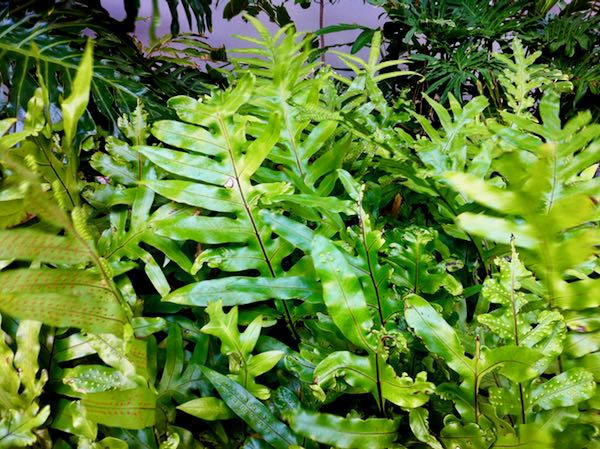Unveiling the Exquisite Beauty of Microsorum scolopendria: Exploring the Enchanting Wart Fern
Microsorum scolopendria, also known as Phymatosorus scolopendria, is a captivating fern that belongs to the Polypodiaceae family of plants. This remarkable species goes by various names, including Monarch Fern, Musk Fern, Wart Fern, Maile-scented Fern, and Breadfruit Fern. Native to the Western Pacific rim, South Pacific, and French Polynesia, it exhibits unique characteristics and holds cultural significance in different regions.
Phymatosorus scolopendria, commonly referred to as wart fern, showcases a strongly rhizomatous growth pattern with pinnately lobed leaves. Its ability to spread indefinitely allows it to serve as an excellent ground cover, gracefully crawling along the ground or climbing walls, tree trunks, and rocky areas. The fronds of this fern droop elegantly when placed in hanging baskets, adding a touch of natural beauty to any setting. Despite not being native to Hawaii, Phymatosorus scolopendria has become one of the most commonly cultivated ferns in the region, reflecting its widespread popularity.
The specific epithet, “scolopendria,” alludes to the numerous sori found on the frond undersides, which resemble the legs of a millipede. These deep sunken sori result in wart-like bumps on the upper sides of the fronds, giving the fern its common name, “wart fern.” The foliage of Microsorum scolopendria is light green and leathery, featuring deeply lobed leaves with up to six lateral lobes. The midrib and main veins of the lobes are raised on both surfaces, creating an intricate texture that adds to its visual appeal. Rusty orange-brown sori are arranged in irregular rows along either side of the midrib, further enhancing its unique aesthetic.
Apart from its ornamental value, Microsorum scolopendria holds practical significance. When crushed, it releases a delightful fragrance reminiscent of maile, adding to its allure and making it a source of aromatic pleasure.
Cultivation of Microsorum scolopendria:
Cultivating Phymatosorus scolopendria requires providing the right conditions for its growth and development. By considering essential factors, you can create an environment that allows this captivating fern to thrive and enchant.
Sunlight: Phymatosorus scolopendria thrives when exposed to bright, indirect light. Place it in a location that receives ample filtered sunlight, avoiding direct sunlight to prevent leaf scorching.
Watering: Wart ferns prefer to be kept consistently moist but not waterlogged. Water them when the top inch of soil feels dry to the touch, ensuring thorough watering to maintain appropriate moisture levels.
Soil: Plant Phymatosorus scolopendria in a well-draining potting mix rich in organic matter. This fern thrives in a substrate that retains moisture while allowing excess water to flow away, preventing waterlogging.
Pests and Diseases: While wart ferns are generally resistant to pests and diseases, occasional infestations can occur. Monitor the plant regularly for signs of scale insects, mealybugs, or spider mites. If detected, treat them promptly with appropriate organic insecticidal soaps or neem oil to prevent damage.
Propagation: Phymatosorus scolopendria can be propagated through division. Carefully separate the rhizomes and plant them in suitable containers or desired locations to expand the presence of this enchanting fern.
Embark on a journey to immerse yourself in the captivating world of Microsorum scolopendria. Experience the delicate fragrance, appreciate its unique foliage, and relish the rich cultural heritage associated with this remarkable wart fern. Create a nurturing environment, and allow this enchanting fern to grace your surroundings with its exquisite beauty and vibrant green presence.




